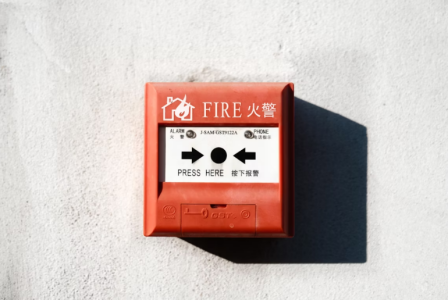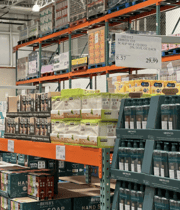Cause revealed in deadly fire that killed 10 at Massachusetts assisted living facility
- Replies 0
Some stories have a way of capturing the attention and emotions of an entire community, holding on tightly in a way that’s hard to shake even as time passes.
When the loss of life collides with serious concerns about safety and accountability, the search for answers becomes not just important, but something that feels immediate and deeply personal.
As investigators work to make sense of the details and those affected try to process the weight of what’s happened, new and unsettling information continues to come to light.
What initially appeared to be a contained local tragedy is now unfolding into something much larger, sparking conversations and concerns that stretch well beyond the community where it began.
It started in the evening hours of July 13 at a residential facility in Fall River, Massachusetts. A fire erupted on the second floor and rapidly spread, trapping elderly residents who struggled to escape.
First responders broke windows and forced doors in a desperate attempt to save lives. Despite their efforts, ten people died and dozens more were injured, including several firefighters and police.
Massachusetts State Fire Marshal Jon Davine confirmed the fire’s likely source after an initial investigation.
Officials believe it was caused by either a malfunctioning oxygen machine or smoking materials found in a resident’s room.

“In an oxygen-rich environment, the fire will ignite more readily and spread more rapidly and burn at higher temperatures,” Davine explained.
The resident who occupied that room died in the fire, making the exact cause impossible to determine.
Medical oxygen was present not only in the resident’s room but also throughout the facility. Investigators noted that the oxygen created conditions for the fire to escalate dangerously fast.
The combination of enriched oxygen and a potential open flame or faulty device proved disastrous. It was a deadly chain reaction that caught nearly everyone off guard.
In the aftermath, the community has struggled with grief and shock. Outside the building, flowers, candles, and handwritten notes form a growing memorial.
Families and neighbors have gathered to honor those lost and to demand accountability. For the city of Fall River, it is the deadliest fire in over 100 years.
Legal action began within days of the incident. A resident who survived filed a lawsuit against the operator of the facility, Gabriel Care Inc., citing negligence and inadequate emergency planning. ‘
“We did the best we could with what we had—but what we had was not enough,” said firefighter Michael O’Reagan. He was off duty but rushed to the scene when he heard the news.
Gabriel Care has stated that the building passed recent fire safety inspections. City records back up that claim, showing that the facility was technically in compliance with existing codes.
But families argue that being “up to code” is not enough when lives are at stake. They say the fire proves there is a wide gap between compliance and real preparedness.
Fall River officials have acknowledged the strain on their fire department. Chronic understaffing left crews unable to fully respond as the fire escalated.
In response, the city is allocating $1.5 million to hire more firefighters and increase overtime in the short term. The goal is to add 15 to 20 new personnel within two years.
Governor Maura Healey visited Fall River days after the fire. She announced $1.2 million in emergency funds to support the city’s fire services and first responders.
Her administration also launched a statewide safety initiative aimed at all assisted living facilities. The effort seeks to standardize fire safety procedures and hold facilities more accountable.
Under the new program, all 273 assisted living facilities in Massachusetts must contact residents and families. Each letter must outline the facility’s fire evacuation plan, emergency protocols, and key points of contact.
Facilities are also required to complete a state-issued survey on fire drills, equipment conditions, and building readiness. Officials say this move is necessary to prevent future tragedies.
The conversation doesn’t stop with facility management or fire marshals. Communities, family members, and public officials all play a role in ensuring care homes are truly safe. Awareness alone is not enough—oversight and action must follow. We must ask what could have been done and demand it be done next time.
Read next:

How confident are you in the emergency readiness of your local care facility? What safety practices do you think should be mandatory for all assisted living homes? Share your thoughts in the comments—we want to hear your stories and ideas. Let’s work together to ensure this never happens again.
When the loss of life collides with serious concerns about safety and accountability, the search for answers becomes not just important, but something that feels immediate and deeply personal.
As investigators work to make sense of the details and those affected try to process the weight of what’s happened, new and unsettling information continues to come to light.
What initially appeared to be a contained local tragedy is now unfolding into something much larger, sparking conversations and concerns that stretch well beyond the community where it began.
It started in the evening hours of July 13 at a residential facility in Fall River, Massachusetts. A fire erupted on the second floor and rapidly spread, trapping elderly residents who struggled to escape.
First responders broke windows and forced doors in a desperate attempt to save lives. Despite their efforts, ten people died and dozens more were injured, including several firefighters and police.
Massachusetts State Fire Marshal Jon Davine confirmed the fire’s likely source after an initial investigation.
Officials believe it was caused by either a malfunctioning oxygen machine or smoking materials found in a resident’s room.

Cause revealed in deadly fire that killed 10 at Massachusetts assisted living facility. Image source: Irvin Zheng / Unsplash
“In an oxygen-rich environment, the fire will ignite more readily and spread more rapidly and burn at higher temperatures,” Davine explained.
The resident who occupied that room died in the fire, making the exact cause impossible to determine.
Medical oxygen was present not only in the resident’s room but also throughout the facility. Investigators noted that the oxygen created conditions for the fire to escalate dangerously fast.
The combination of enriched oxygen and a potential open flame or faulty device proved disastrous. It was a deadly chain reaction that caught nearly everyone off guard.
In the aftermath, the community has struggled with grief and shock. Outside the building, flowers, candles, and handwritten notes form a growing memorial.
Families and neighbors have gathered to honor those lost and to demand accountability. For the city of Fall River, it is the deadliest fire in over 100 years.
Legal action began within days of the incident. A resident who survived filed a lawsuit against the operator of the facility, Gabriel Care Inc., citing negligence and inadequate emergency planning. ‘
“We did the best we could with what we had—but what we had was not enough,” said firefighter Michael O’Reagan. He was off duty but rushed to the scene when he heard the news.
Gabriel Care has stated that the building passed recent fire safety inspections. City records back up that claim, showing that the facility was technically in compliance with existing codes.
But families argue that being “up to code” is not enough when lives are at stake. They say the fire proves there is a wide gap between compliance and real preparedness.
Fall River officials have acknowledged the strain on their fire department. Chronic understaffing left crews unable to fully respond as the fire escalated.
In response, the city is allocating $1.5 million to hire more firefighters and increase overtime in the short term. The goal is to add 15 to 20 new personnel within two years.
Governor Maura Healey visited Fall River days after the fire. She announced $1.2 million in emergency funds to support the city’s fire services and first responders.
Her administration also launched a statewide safety initiative aimed at all assisted living facilities. The effort seeks to standardize fire safety procedures and hold facilities more accountable.
Under the new program, all 273 assisted living facilities in Massachusetts must contact residents and families. Each letter must outline the facility’s fire evacuation plan, emergency protocols, and key points of contact.
Facilities are also required to complete a state-issued survey on fire drills, equipment conditions, and building readiness. Officials say this move is necessary to prevent future tragedies.
The conversation doesn’t stop with facility management or fire marshals. Communities, family members, and public officials all play a role in ensuring care homes are truly safe. Awareness alone is not enough—oversight and action must follow. We must ask what could have been done and demand it be done next time.
Read next:
- Fewer inspections, more risk? What a federal housing cut could mean for you
- Are these 7 spots in your home quietly increasing your fire risk?
Key Takeaways
- A fire at Gabriel House in Fall River, MA, killed 10 residents and injured more than 30 others.
- Officials say the blaze was likely caused by a malfunctioning oxygen machine or smoking materials.
- The incident has triggered lawsuits, public scrutiny, and statewide safety reforms.
- Massachusetts is now requiring all assisted living facilities to review and report their fire safety plans.






